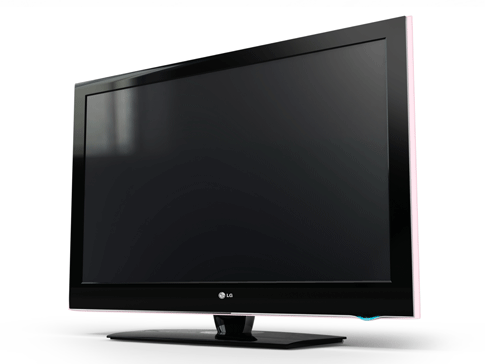It Hertz So Good?
The next baffling TV spec: refresh rates

We may earn revenue from the products available on this page and participate in affiliate programs. Learn more ›
Cutting-edge HDTVs are confusing enough, but vendors torture us further when they fixate on some ambiguous number and beat us over the head with it. In past years, they challenged us to parse sexed-up estimates of viewing angles and contrast ratios. Then they bragged about wide color gamuts that allow the TVs to distort what we’re watching by adding neon-like hues that were never in the original movies or TV shows.
This year, it’s refresh rate—how many times per second a screen can create a new image. When you talk refresh rate, you’re most likely talking about LCDs. Standard screens that refresh 60 times per second blur movement because they can’t update images fast enough to show action quickly. In the past two years, companies started brining out sets that refresh doubly fast, at 120 times per second, also known as 120 hertz.
That should do the trick. But starting last year, we saw sets that refresh at 180 hertz. This year we’re seeing 240Hz, and something that LG calls “Trumotion 480Hz”—even though it’s based on a 240-hertz panel. (We’ve asked how the number magically doubled and are still waiting for a comprehensible answer.) We’ll take a close look at these hyperactive LCDs this week to see if the tech is real and makes any difference.
Plasma is Nothing Like LCD
Not to be outgunned, the plasma companies (which are often the same companies that make LCD TVs) are bragging about 600Hz(!) refresh rates. That number is about as impressive as it is new. Plasma companies have been making at least 480-Hz panels over the past decade. But that figure means something completely different for plasmas than it does for LCD TVs because the two technologies are so different.
In the past, plasma makers simply talked about the frame rate—the number of actual video frames they show per second. All HDTVs (including LCDs) display at least 60 frames per second. (Pioneer has made panels that do 72.) Most video is shot at 30 or 60 frames per second, and film is shot at 24fps. So plasmas and LCDs are already showing every video frame (often more than once) and are therefore plenty fast enough.
But plasma needs to refresh even faster just to get to the 60fps mark, which is one of the ways it varies greatly from LCD. To make an LCD pixel brighter or darker, the panel adjusts the position of the liquid crystals to control how much of the backlight comes through the screen.
Plasma pixels can’t vary their brightness. They can only be on or off. But plasmas can vary how long a pixel is on for. And the longer a light shines (in milliseconds), the brighter it looks. To achieve this, each video frame on a plasma is actually comprised of a series of “subfields” of varying duration. The more subfields a pixel is on for, the brighter it looks in that frame of video.
[Insert: Plasma Frames. Caption: “Frames”—varying length of time that a plasma pixel is lit—determines how bright it appears in each video frame. Image courtesy Daewoo.]
It’s About Color, Not Motion
A plasma has to have at least 8 subfields per frame in order to produce the 256 shades of red, green and blue that make up a full color picture. And since there are 60 frames per second, a 480Hz (8 x 60) refresh rate is nothing to brag about. It’s a minimum requirement. With 10 subfields, as LG and Samsung are now touting, they can in theory do more fine adjustment of color.
But that doesn’t make them better than LCDs, since the latter don’t even use subfields. Instead, ever-improving electronics more finely control voltage levels to better adjust the position of the liquid crystals. And most important, increasing the number of subfields has nothing to do with how a plasma shows motion. It still has the same 60 frames per second.
In fact, the problem with LCD is not that it doesn’t show enough frames per second (60 is plenty). But our eyes can see the relatively slow process of rearranging the liquid crystals to set up the next frame. It’s like turning up the house lights in a theater during a set change between scenes of a play. Better to keep the lights off so the audience doesn’t see the furniture movers. In fact, that’s basically what some new LCDs are doing. They turn off the backlight in between frames so you don’t see the transition period. LG for example, is calling this feature a “scanning backlight,” but other companies have used this technique for a while. (Those “off” periods between each of the 240 frames seem to be the trick that LG is using to claim the magical 480Hz refresh rate.)
As usual, it doesn’t matter what the numbers are. It matters how the picture looks. Almost no one, except video fanatics and spec-readers, complained when LCDs did a mere 60 Hz. So even 120Hz is likely plenty. 240, 480 or 600 may be just a meaningless number.
But we’ll give it a closer look in the future and let you know if there’s anything to see.